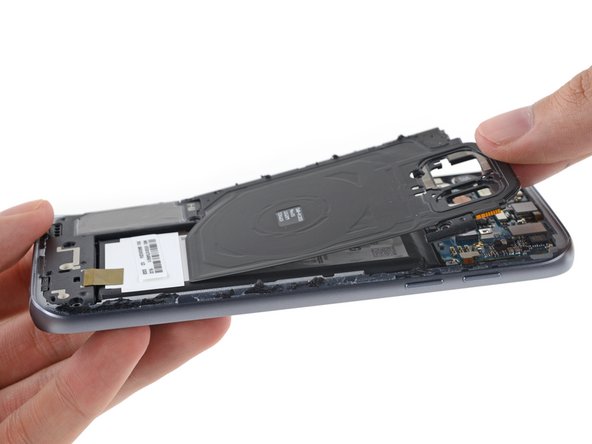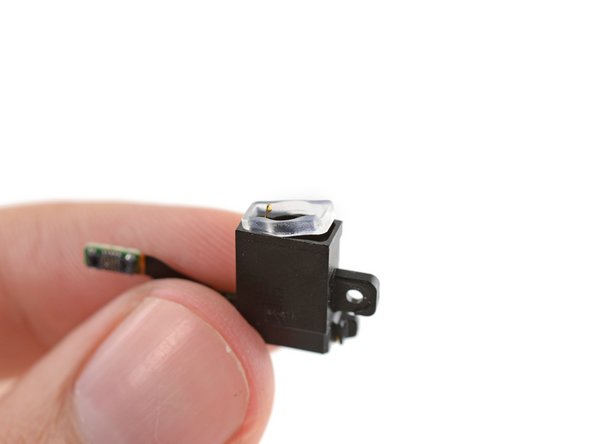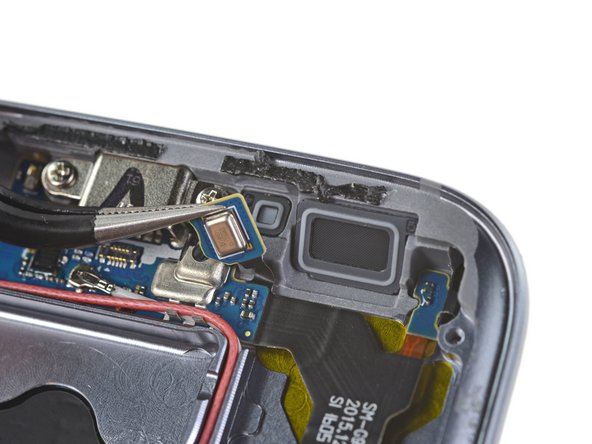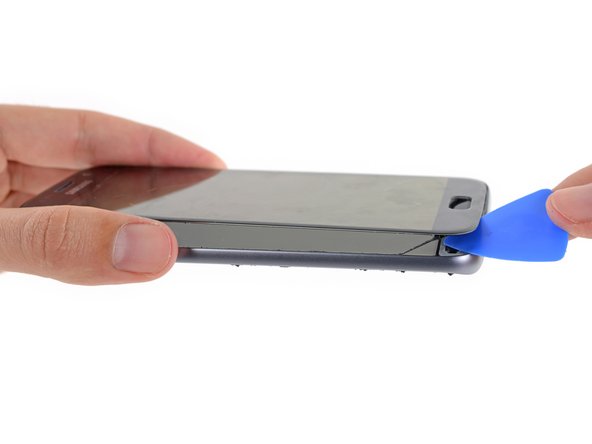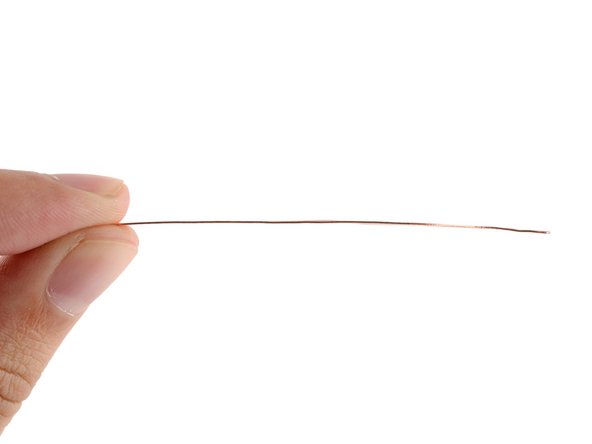소개
Okay, this phone may have been cracked open a couple times already, but we're eager to investigate the mysterious thermal spreader ourselves. Will the fancy new tech in the S7 be as cool as it's cracked up to be? Only a teardown will tell.
Stay up to date on the latest repair news, and get a behind the scenes look at where the teardown magic happens by following us on Instagram, Twitter, and Facebook.
필요한 것
동영상 개요
-
-
While legend has it that the number 7 has magical qualities, there's no knowing what qualities the S7 has. If we were to guess completely at random:
-
5.1-inch Super AMOLED display with 2560 × 1440 resolution (576 ppi)
-
Qualcomm Snapdragon 820 processor with 4 GB RAM + Adreno 530 GPU
-
12-megapixel rear camera with dual pixel autofocus, 4K video capture; 5-megapixel selfie camera
-
32 or 64 GB internal storage, expandable via MicroSD card (up to 200 GB additional)
-
IP68 water resistance rating
-
Android 6.0 Marshmallow
-
-
-
Compared with its predecessor, the Galaxy S6, the all-new S7 is... uhhhh...
-
Sorry—which one's the S7 again? We have to flip them over to double-check.
-
That's better. Unlike its predecessor, the S7's back panel curves gently on the sides, making it a more grabbable handset.
-
After tearing down the S6, we weren't exactly wowed by its glass-on-glue construction; it scored a 4 out of 10 and a big "meh" in the repairability department. Here's hoping that, appearances notwithstanding, the S7 will fare better...
-
-
-
Interestingly, Samsung chose to stay with a run-of-the-mill micro USB port, instead of the new USB Type-C standard.
-
For now, Samsung seems to think that the older, more widely compatible standard is good enough.
-
Samsung has also made upgrading to a new phone incredibly easy, with an included USB adapter. It's almost like they expect you to buy a new phone before your current device is completely worn out beyond repair. Weird.
-
-
-
With no exterior screws to be found, there can only be one form of dark matter holding this Galaxy together. Yep, that'd be glue.
-
Fortunately, it's nothing a hot iOpener can't handle.
-
We love any excuse to break out our trusty twin-suction-cupped iSclack tool, and the S7's front and rear glass panels make it a perfect target.
-
With the rear glass lifted by a smidge, we attack with an opening pick and slice apart the adhesive.
-
All in all, it's the same drill as last time—with maybe a slight increase in stickiness.
-
-
-
Where last year we found gooey white adhesive, we now find gooey black adhesive. Possibly it was reformulated for waterproofing purposes—or, it could just be a matter of better color-matching.
-
Removing the back cover hasn't given us access to anything useful—just a smooth surface for the glass to stick to.
-
Fortunately, part of that surface consists of screws.
-
-
-
Actually, that smooth surface contains some useful bits, like the S7's antennas...
-
...and its speaker...
-
...and MY axe.
-
-
-
We line up the pieces for a closer look at the individual components, including the wireless charging coil.
-
All these modular components connect to the motherboard by way of tiny spring contacts, making removal and replacement a snap—once you've muscled your way past all the glue and glass, anyway.
-
-
-
Samsung got some flak from consumers for reducing battery capacity in last year's S6. It seems they took the hint and made up for it by including this 3000 mAh battery in the S7.
-
Although the battery upgrade means more time to binge on apps and games, the battery itself is well wedged and adhered in place, making extraction a little tough.
-
If it wasn't designed to be readily removed, then it wasn't intended to be repaired or replaced. Boo.
-
-
-
-
Working our way to the motherboard, we pluck out a 5-megapixel front-facing camera.
-
Unfortunately, you'll have to work almost as hard to get flawless selfies on the S7 as you did on the S6. The only front-facing camera upgrade here is the shiny new ƒ/1.7 aperture.
-
With the front camera out of the way, we lift up the motherboard and find a familiar daughterboard connector on its underside.
-
-
-
Compared to the 16-megapixel rear camera on the S6, it seems the S7 got a downgrade with a 12-megapixel/4K rear camera .
-
Additionally, these pixels measure in at 1.4 µm—a full 25% increase from last year's model. So, despite having fewer pixels, even photos taken in the worst lighting should come out clearer in a head-to-head comparison.
-
Looking closely at the camera assembly, we find:
-
Sony IMX260 12 MP image sensor (likely)
-
Renesas OIS driver
-
STMicroelectronics L2G2IS 2-axis MEMS gyroscope
-
Winbond W25Q32FWXGIG 32 Mb flash memory
-
-
-
Our friends at Chipworks may have beaten us to the punch, but that doesn't stop us from giving this board our due diligence. Squirreled away under the EMI shields, we find:
-
SK Hynix H9KNNNCTUMU-BRNMH 4 GB LPDDR4 memory layered over the Qualcomm MSM8996 Snapdragon 820
-
Samsung KLUBG4G1CE-B0B1 32 GB MLC universal flash storage 2.0
-
DSP Group DBMD4 audio/voice processor
-
Qualcomm WCD9335 audio codec
-
Maxim Integrated MAX98506BEWV audio amplifier
-
Maxim Integrated MAX77854EWZ power management w/ li-ion battery charger
-
ON Semiconductor load switch
-
-
-
And on the flip side...
-
Samsung 1316S7 Wi-Fi Module (likely contains a Broadcom BCM4359 WiFi/Bluetooth transceiver)
-
NXP Semiconductor 67T05 (PN67T) NFC controller
-
IDT P9221 wireless power receiver (likely an iteration of IDT P9220)
-
STMicroelectronics LSM6DS3 always-on 6-Axis IMU
-
Qualcomm PM8996 PMIC
-
Qualcomm QFE3100 envelope tracker
-
-
-
IC identification, pt. 3:
-
NXP Semiconductor BGU8103 GPS/GLONASS/Galileo/BeiDou low noise amplifier
-
NXP Semiconductor BGS8M2 LTE low noise amplifier
-
NXP Semiconductor BGS8H2 LTE low noise amplifier
-
NXP Semiconductor BGS8L2 LTE low noise amplifier
-
Infineon BGSX22GN10 DPDT RF antenna switch
-
Infineon BGS12SN6 RF switch
-
Infineon BGS12PL6 RF switch
-
-
-
IC identification, pt. 4:
-
Infineon RF switch
-
Infineon antenna tuning switch
-
RDA Microelectronics RDA6213N FM radio receiver
-
ON Semiconductor FPF2495B over-voltage/current protection load switch
-
Diodes Incorporated AP7346D-3318FS6-7 dual 3.3V & 1.8V LDO regulator
-
Diodes Incorporated AP7340D-18FS4-7 1.8 V LDO regulator
-
Knowles MEMS microphone
-
-
-
IC identification, pt. 5 (sensors):
-
Maxim Integrated MAX86902 heart rate sensor/integrated pulse oximetry/UV sensor module (likely)
-
STMicroelectronics LSM6DS3 3-axis accelerometer/gyroscope
-
Bosch Sensortec BMP280 pressure sensor
-
AKM Semiconductor AK09911 3-axis electronic compass
-
ABLIC, Inc. (Formerly Seiko Instruments) S-5712CCDL1-I4T1U Hall sensor
-
-
-
Next up is the S7's modular headphone jack.
-
Complete with cute rubber seal!
-
Looks like Samsung decided to take its ruggedized "Sport" standards to their flagship, with a hefty IP68 rating (the highest level being IP69).
-
We find more rubber seals around the lower microphone and speaker making for some serious ingress protection.
-
-
-
Just like its predecessor, the cables for the S7's soft buttons are wrapped around the display-backing frame.
-
These sandwiched cables make a daughterboard replacement (including the charging port) next to impossible, since freeing these cables means removing the OLED screen.
-
Undaunted, we bring back our iOpener to ease the
tensionadhesive. -
While we're at it, we grab a trusty opening pick and set to work on the terrible task of prying open the OLED.
-
-
-
Peeling up those pesky soft button LED cables lets us finally free the daughterboard.
-
Just for those of you keeping score, this messy situation prevents easy replacement of: display and digitizer (of course), USB port, microphone, and soft button LEDs.
-
This beefs up the S7’s waterproofiness, but means more of a fight to repair the thing should you suffer non-water related troubles.
-
-
-
Daughterboard IC identification:
-
ABOV Semiconductor MC80F1504M 8-Bit microcontroller w/ 8 Kb flash
-
Qualcomm QFE2550 antenna tuner
-
Infineon antenna tuning switch
-
Knowles MEMS microphone
-
ABLIC, Inc. (Formerly Seiko Instruments) S-5712CCDL1-I4T1U Hall sensor
-
-
-
Alright, the moment we've all been waiting for: the legendary "liquid cooling" system in the S7.
-
It's a tiny copper twig.
-
This may not be as revolutionary as Samsung describes it, but most heat pipes do technically use liquid to transfer heat.
-
In the case of the S7, we're guessing that the pipe transfers heat to the phone's metal midframe, where it can then radiate out to the side—or directly into your hands.
-
We've seen heat pipes in phones before, but the growing need for them shows how phone processors are getting faster (and sometimes hotter) each year.
-
-
-
Samsung Galaxy S7 Repairability Score: 3 out of 10 (10 is easiest to repair).
-
Many components are modular and can be replaced independently.
-
Unlike the S6 Edge, the battery can be removed without first ousting the motherboard—but tough adhesive and a glued-on rear panel make replacement more difficult than necessary.
-
The display needs to be removed (and likely destroyed) if you want to replace the USB port.
-
Front and back glass make for double the crackability, and strong adhesive on the rear glass makes it very difficult to gain entry into the device.
-
Replacing the glass without destroying the display is probably impossible.
-
댓글 25개
Fantastic breakdown, shame that Samsung refuse to have easily repaired phones (or even replace the battery). Its as if they want you to buy a new one... At the end of the day, I love my S4 (CM13) and until there is a reason to up(down)grade I am happy with it
brightness of the photos is the best reason
m2k -
Thanks for helping me decide which phone to get. Samsung is out of my list because I keep my phone longer than the battery lasts. So the shortlist is down to Nexus 5X and LG G5. Keep on your good work:-)
G5 man
It's compatible with that little rolly ball thing















